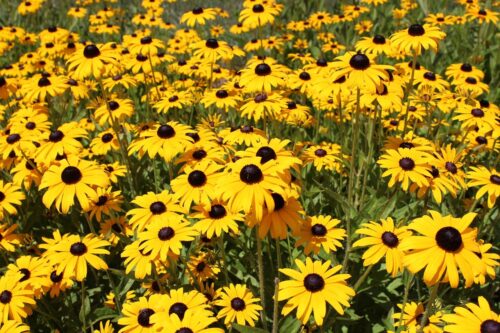Know About Perennials You Should Never Cut Back in Fall to ensure healthy plants and blooms in the next growing season.
Do you know about Perennials you Should Never Cut Back in Fall to save them in winter and encourage better growth during spring? Cutting them back early can damage their ability to grow well. Find more about these plants to keep intact helps ensure healthy garden next year.
Perennials You Should Never Cut Back in Fall

Consider the purpose of the plants in your garden when deciding which perennials to cut back in the fall.
1. Perennials that Require Winter Protection
A few perennials are known as tender, like butterfly bushes or roses. These plants don’t handle winter well and often get damaged. The more of their stems you leave on the plant, the better chance they have to survive the cold.
Other tender perennials are red-hot poker, garden mums, and Montauk daisy.
2. Evergreen or Semi-Evergreen Perennials
You can leave perennials with evergreen foliage till spring. The plants include Christmas fern and hellebore. Prune these plants after new growth appears.
3. Low-Growing Perennials
Wait till spring for the low-growing perennials such as hellebores, moss phlox, dianthus, and hardy geraniums, as they don’t require fall pruning.
4. Perennial that Brings Winter Interest
Doing less cleanup in the fall can make your garden look more fascinating in winter. Dry stalks, fading leaves, ornamental grasses, and seed pods give the garden a new look, especially when covered with snow.
Plants like switchgrass, feather reed grass, and Chinese silver grass sway in the wind and add movement to the garden.
5. Perennial Good for Beneficial Insects
Beneficial insects often spend the winter in native plants as pupae, caterpillars, or eggs. These plants give them protection from predators. It is best to leave these perennials alone and wait until spring to trim them.
6. Perennials that Feed Birds
Birds face difficulty in finding insects or seeds to eat in winter. When you leave seedheads in the ground, it helps birds to survive in cold climates. Perennials that produce seeds or fruit late in the season are good to keep in the garden.
Some of them are ornamental grasses, prairie gay feathers, black-eyed Susan, purple coneflowers, sedum, switchgrass, zebra grass, coreopsis, sunflowers, and Joe-Pye weed.
What Perennials to Cut Back in Fall
Perennials with New Basal Leaves
Plants like yarrow, globe thistle, and Shasta daisy produce new basal leaves after the summer season. It would be best if you cut back their stalks in the fall, but be careful not to damage the new leaves.
Perennials You Don’t Like to Prune during Spring
When you prune more perennials during the fall, you will have less work in the spring. So, feel free to cut back any plants that don’t help wildlife or add beauty to your garden in winter.
Infected Perennials
Prune the plants affected by diseases in the fall. This helps reduce the chances of the disease spreading in your garden next season.
Perennials that Attract Pests
Cut-back perennials during fall are perfect for plants that are susceptible to pests. Keep in mind not to compost plants with infected foliage and stems.
How to Prune Perennials during Fall
When you start pruning perennials during fall, avoid cutting them at ground level. Leave up to two inches (5 cm) of stem above the soil so you can see where they are. Avoid digging them up by mistake before new growth appears in the spring.
It will be best to use bypass pruners or hedge clippers or try a power hedge trimmer for faster work.



